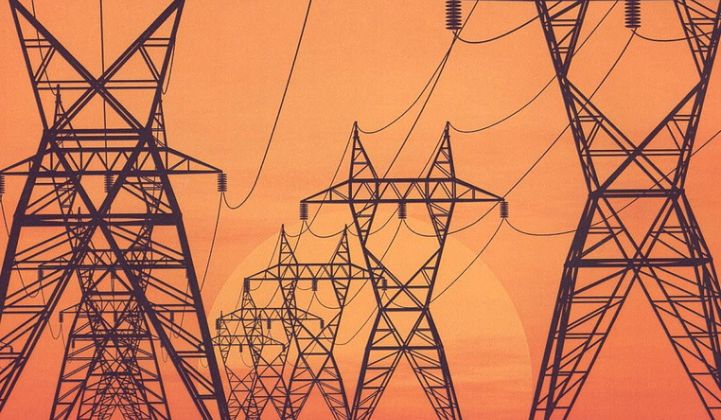The Obama administration is calling on Congress to approve billions of dollars in new spending to modernize the power grid, as part of a first-ever Quadrennial Energy Review released Tuesday that highlights the major reliability, security and renewable energy integration challenges facing the country’s electricity infrastructure.
Many of the review’s spending recommendations are built into the White House's broader DOE 2016 budget request, which seeks to increase support for renewables and carbon reductions called for in the proposed Clean Power Plan and reduce subsidies for fossil fuels. That request is already facing strong opposition from Republican lawmakers, leaving it uncertain whether these recommendations will find their way into law.
But Tuesday’s report, the result of an effort launched in January 2014, states that major investment over the next 10 years will be needed to replace aging power lines, improve the grid’s capacity for renewable energy, and protect against threats ranging from climate-change-induced superstorms to the threats of terrorist cyber and physical attacks. It also covers natural gas and oil pipeline systems, and the threats to the transportation infrastructure that move these energy supplies across, into and out of the country.
On the electricity system side, the QER recommends spending $356 million next year and $3.5 billion over the next 10 years to support the creation of “new tools and technologies in the following areas:
- Design and planning tools to model emerging needs
- System control and power flow to optimize for new grid capabilities
- Grid sensing and measurements for determining changes in variable generation markets and infrastructure conditions
- Devices and integrated systems testing for evaluation and validation of new technologies in a systems context
- Grid security and resilience efforts to protect, prevent, analyze, and respond to threats by developing physical and cybersecurity technology and standards
- Risk management, including integrated demonstration of promising new technologies with new institutional approaches
- Institutional support and alignment, including analyses, workshops, and dialogues to highlight key policy and market challenges and options for grid transformation”
These are many of the same technology categories that GTM has defined as critical for developing capabilities at the grid edge. We will also be delving deeper into these trends at our upcoming Grid Edge Live conference this June in San Diego.
Factors such as the rise of intermittent wind and solar power as a significant portion of grid energy supply, the spread of customer-owned energy resources like rooftop PV and plug-in electric vehicles, and the emergence of energy storage as a significant part of grid operations are all forcing utilities, regulators and distributed energy companies to find new ways to manage them as an integrated whole.
“Though small relative to the size of the industry, DOE’s investment is significant compared to utilities’ limited spending on innovation, which stems from an investor-owned business model where profits are based on return on capital expenditures, as well as public- and consumer-owned power’s requirement for lowest feasible rates,” the report notes.
We’ve covered the challenges that utilities and regulators face in approving investment in untested technologies, as well as how states like New York, California, Hawaii and others are seeking to reform regulatory structures to change that.
The report’s fact sheet (PDF) also names 17 of the country’s biggest utility companies as members of a new “Partnership for Energy Sector Climate Resilience” to improve extreme weather preparedness and make the grid more resilient.
The partners, set to meet with DOE officials on April 30, include big investor-owned utilities like Con Edison, Dominion Virginia Power, Exelon, Iberdrola USA, National Grid, Pacific Gas and Electric, PEPCO Holdings, San Diego Gas and Electric/Sempra and Xcel Energy, as well as municipal utilities Sacramento Municipal Utility District and Seattle City Light, and public agencies such as Great River Energy and the Tennessee Valley Authority.



